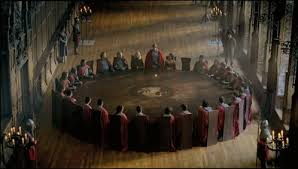This week’s question is How do you approach reserves? Are you doing anything different than normal based on how the first quarter of the season has played out?
Jeff Zimmerman (Fangraphs, The Process, @jeffwzimmerman): I want to stream starting pitchers from my bench so my draft/auction focus is to get as many as many decent arms as possible with possibly little to no bench hitters (e.g. my LABR team). Second, I try to have all non-catcher positions covered in leagues where I can make in week moves. This might mean a lesser player on the bench (e.g. Brandon Drury) but he covers several positions. Once I no longer need to stream starters from the wire, I might cut down a sepculative pitcher and focus on hitter. I’m making zero changes to this approach since it has worked in the past and is working this year. Shove pitching, manage hitting, espically with 15 more hitters in the player pool from the NL DH.
Doug Dennis (BaseballHQ, @dougdennis41): Obviously, DL slots matter a great deal when answering this question. If you have DL slots, you can just keep grabbing guys and sticking them into the lineup, without worrying that you are harming your overall roster. If you do not have DL slots, or have very limited DL slots, then you have to make some value judgments about the value of a given DL players vis-a-vis the replacement. While none of this is exciting in either of my NFBC leagues, my Tout AL team has 4 reserve slots and I have three minor league players in those slots: A.Rutschman, Jo.Lowe, and Ja.Duran. It is my hope that by mid-June, all three of them will be on the major league roster. And I have not had to weigh their value (while producing zeroes) against a player who is active and playing.
AJ Mass (ESPN, @AJMass): I’ve had as many as eight players on the IL at the same time this season. As such, my reserves are simply the players who best fill the openings in my lineup thus far. As my crippled roster gets healthy, I’ll have to make some calls — but for now, it’s really just “all healthy bodies on deck.”
Todd Zola (Mastersball, @toddzola): With offense down, counting stats are at a premium. While maximizing plate appearances is always paramount, it helps to have a couple extra bodies this season to find the optimal matchups. This means fewer stashes of prospects, speculative closers, starters to stream and in leagues with no separate IL, players slated to be out for awhile. The most difficult decisions for me in non-IL leagues is whether to keep a hurt guy. Sure, they’re likely to help my roster when they get back, but in the meantime I’m forced to play a weaker lineup since I have one fewer healthy body to deploy in good scenarios. The other tough choice has been waiting on some spec closers, but fortunately, my patience with Scott and Joe Barlow appears to be paying off.
Brian Walton (CreativeSports2, @B_Walton): Particularly in redraft leagues with relatively limited reserve spots, it is a good time to re-assess how young players you took a chance on back in March but were sent down to open the season are currently doing in the minors as to whether or not they should be held onto. Those roster spots might be better redeployed on streamers or immediate contributors rather than waiting for supposedly higher upside players who may or may not be coming.
Nick Pollack (Pitcher List, @PitcherList): In H2H leagues, generally my approach shifts during the season. Early on, it’s about chasing any many high ceiling pitchers as we watch many arms pitch differently than the previous season or get new opportunities. Once the dust settles around May, my bennch focuses more on an array of hitters to ensure I get as many PAs as possible on Mondays and Thursdays – H2H weeks are often determined by who has the most PAs from their lineup. There’s a balance each week to see if you can swap out a bench spot for a stream throughout the year once the number of high ceiling pitchers on the wire diminishes drastically.
Scott Engel (Rotoballer, @scotteTheKing): My reserves are usually players who I can put into my lineup at any time. I want to have good depth, and also be patient with some performers if I have room to stash them. I am not doing anything different. I just don’t want to be in any position where I don’t have a viable substitution in case of an injury or a cold streak.
Eric Karabell (ESPN, @karabelleric): My initial reserves are usually heavy on potential streamers for the rotation, and who knows, perhaps one or more turns into more than that. It’s easier to find a fill-in bat, and nobody wants to mess with bad pitchers. That’s why getting versatile bats on draft day is wise. Tends to help later. I seldom bother with rookies on my reserves.
Nando Di Fino (The Athletic, @nandodifino): [this message was redacted by Ian Kahn]
Derek VanRiper (The Athletic, @DerekVanRiper): My reserves will vary slightly depending on the type of roster that I built. In this year’s 15-team mixed Tout Wars league, I spent much more aggressively than usual on bats, which has shifted my bench to be mostly starting pitcher streamers that can be shuttled in and out of the lineup. If I had spent a lot on pitching, the group of reserves might have the opposite look. Like others, I’m increasingly willing to take slightly less with player skills and have more versatility on hand. I think one underrated aspect of having a versatile roster is finding players during draft prep who are likely to pick up new eligibility quickly, as many multi-position eligible players already have that value baked in.
Mike Podhorzer (Fangraphs, @MikePodhorzer): My reserve list approach is heavily dependent on league rules/format. But in general, I try to stack pitchers with high projected strikeout rates in the hopes of hitting on some breakouts. That strategy remains in play this season.
Michael A. Stein (Fantasy Judgment, @FantasyJudgment): Generally I try to have players with positional flexibility on my bench so I can address any injury, prolonged slump, or strategic matchup. However, I do not ever carry backups at catcher. As for pitchers, I do try to stream starters based on matchups while also stashing set-up relievers who may get chances for saves down the road.
Rudy Gamble (Razzball, @RudyGamble): For leagues with IL and presumbaly no in-week replacements, it’s all about pitchers (both SPs and Closer specs). For NFBC-style, I want a couple rotational hitters to play matchups + max PAs. I typically avoid prospect stashing in either scenario but will make exceptions in cases of high upsides (e.g., Oneil Cruz and Nick Lodolo).
John Laghezza (The Athletic, @MLBMovingAvg): I haven’t really altered my approach, other than to really make sure to check drop lists for GMs that may be frustrated too soon.. I’m generally look for hitters I trust, so I can fill my bench with quality pitchers to choose from rather having to stream. I’ve also never been big on prospects in redraft leagues, I think they’re -EV.
Charlie Wiegert (CDM Sports, @GFFantasySports): Depending on bench size, the biggest change I’m made the last few years is to carry guys in the minors. They take up space and their chances of making a contribution is not worth having someone who will. Like a Wilmer Flores! He’s been a great use filling in at multiple positions for DLed guys. And most rookies usually struggle for a month or so before they adjust!
Patrick Davitt (BaseballHQ, @patrickdavitt): In unlimited DL/small reserve/deep league (Tout-AL), I wanted a couple of flexible position players and a “safe” reliever or two, maybe one high-hopes prospect. My “safe” relievers have killed me all season. In TGFBI, with NFBC 7-player reserve and no DL, I’ve been churning through trying to find players who will align with my active guys as they get hurt and have to be replaced.
Mike Gianella (Baseball Prospectus, @MikeGianella): I’m being a little more patient this year with injured players, stashes and hitters off to slow starts. In the past, I’ve cut bait too soon on these types of hitters and as a result seen others reap the benefits when they almost invariably bounced back. This doesn’t mean I’m keeping EVERYONE, but I am being a little more patient before I simply give up on a hitter.
Mike Sheets (ESPN, @MikeASheets): My approach is largely dependent upon league type. In shallower leagues, I’m likely to churn through the bottom of my roster a little more often. I’m not as worried about dropping someone who may contribute down the line because I know plenty of other players will pop up. I’m also more likely to stash a prospect or two, as it’s easier to get by with less depth considering the number of decent players available on the wire. In deeper formats, I find myself a little more hesitant to drop players I believe in before the season started. Sometimes this can be a negative, as I’ll hold onto a player too long. But I’m willing to be patient and hope it pays off.
Chris Blessing (Baseball HQ, @C_Blessing): I’m not managing it well at all in AL Touts. However, in my other leagues, I’ve done well with a mix of younger unproven players and veteran one or two dimensional players I can plug in when things might be stacked against one of my regular performers.
Greg Jewett (Fantasy Alarm, @gjewett9): Being pliable, and in Tout, I kept Brandon Drury as a bench player when making a roster decision since he can be deployed at a multitude of positions. Versatility becomes a premium going through a season still dealing with lingering COVID issues, injuries and fewer rest days. A key in the head-to-head league, being streaming starting pitchers in the two lineup sessions. A player like Drury capable of plugging holes on offense, makes him my only hitter of the six bench spots.


